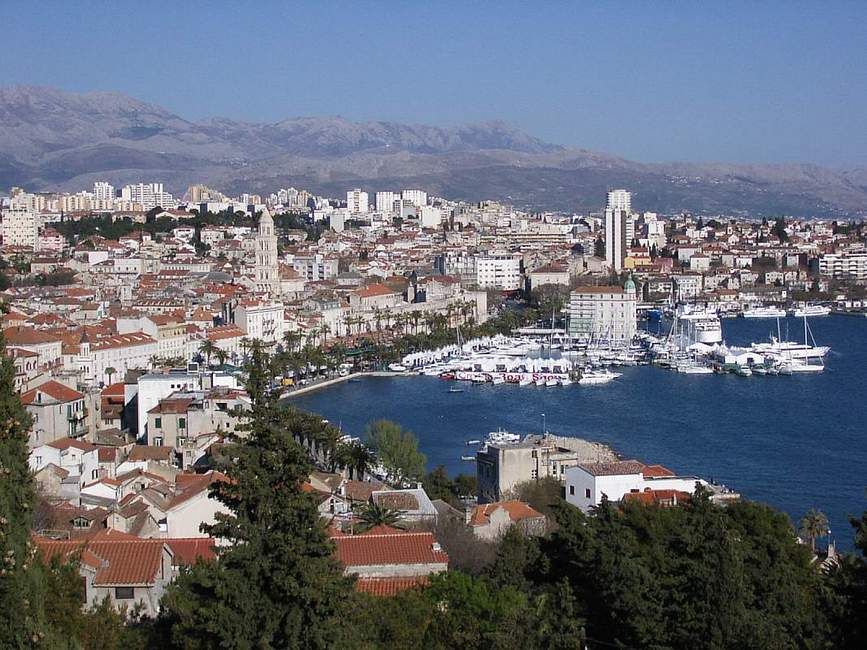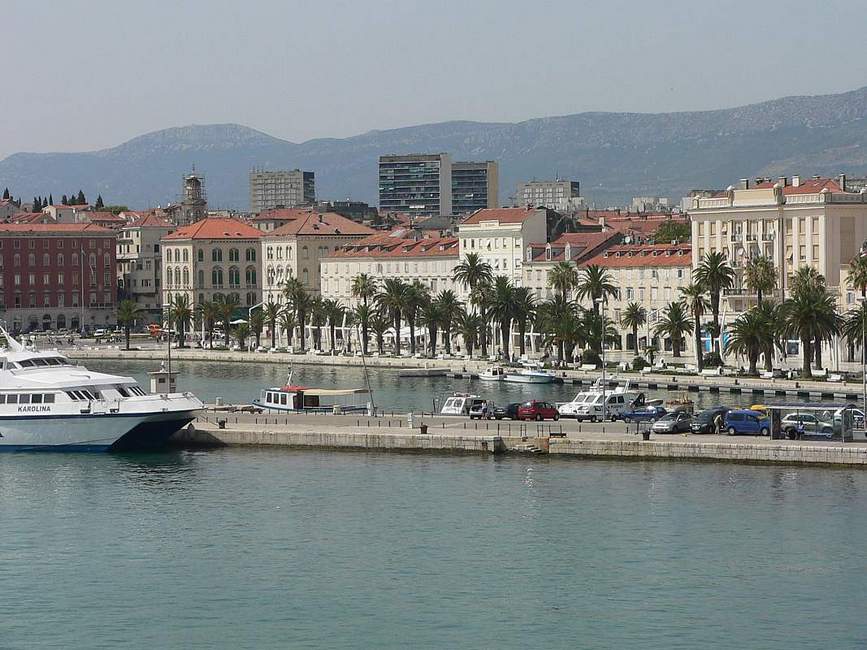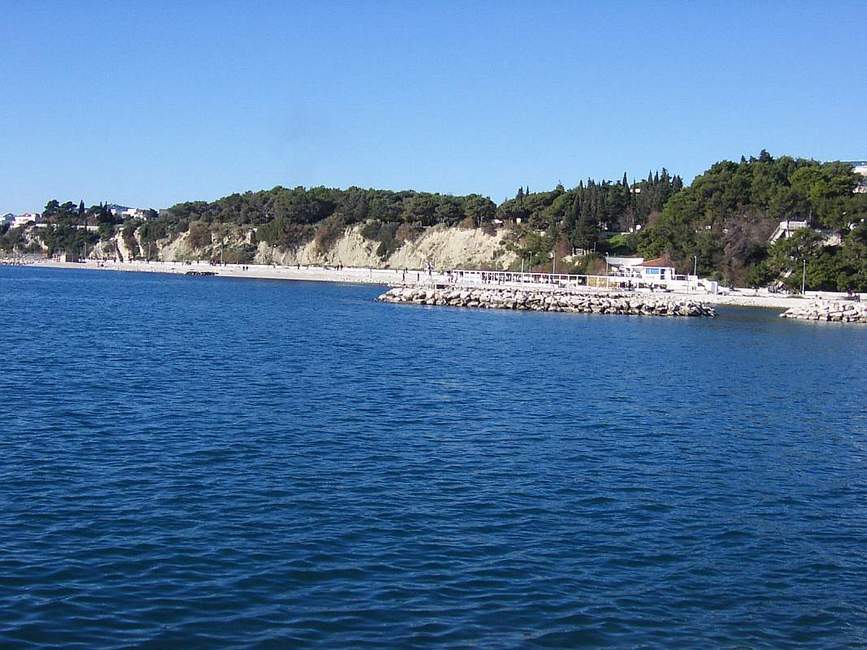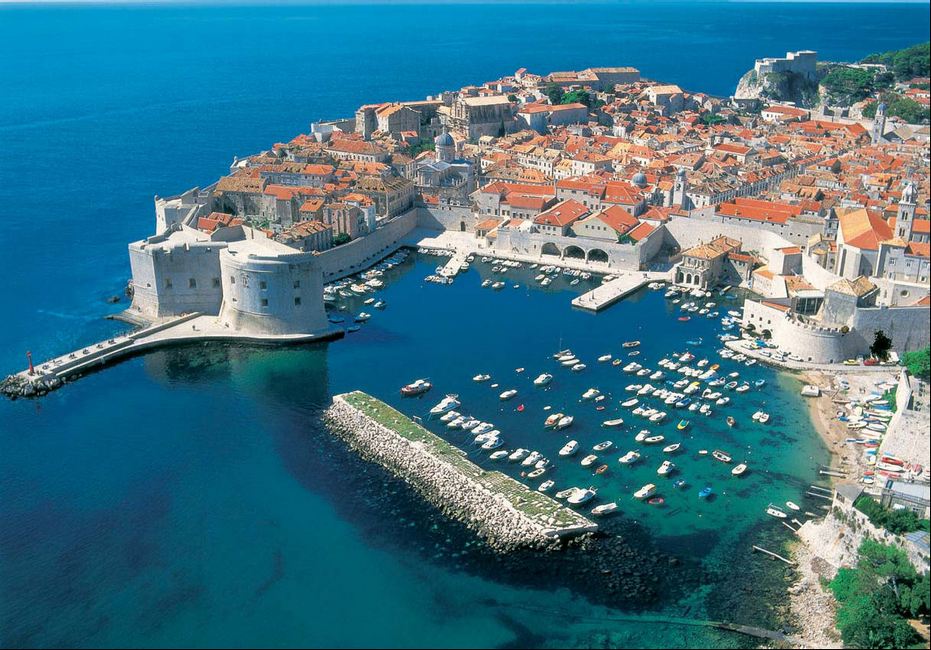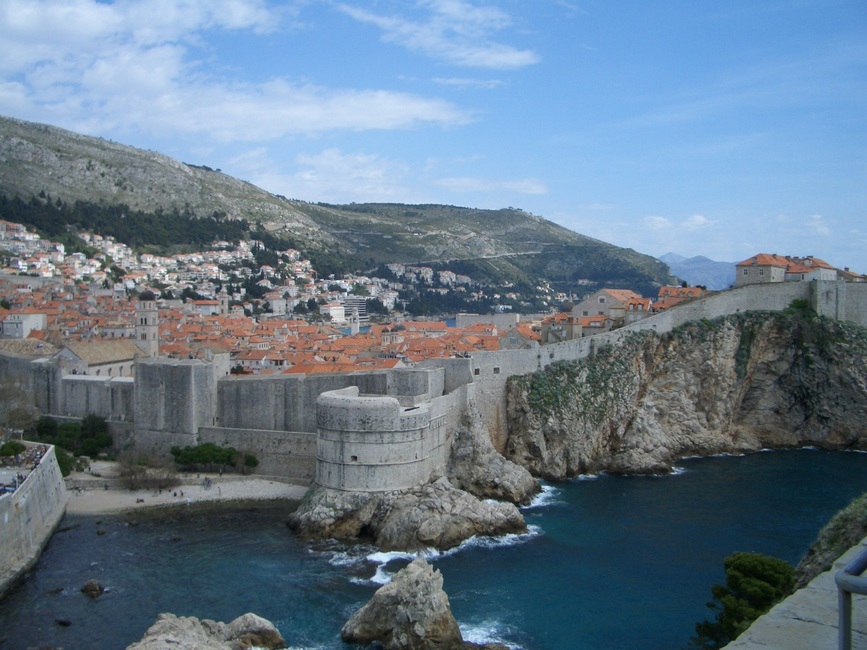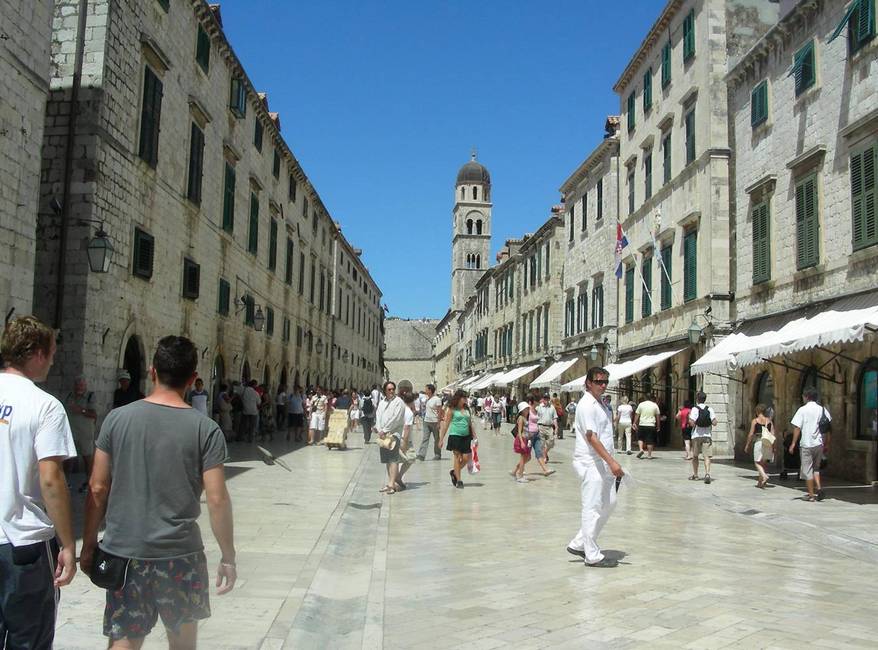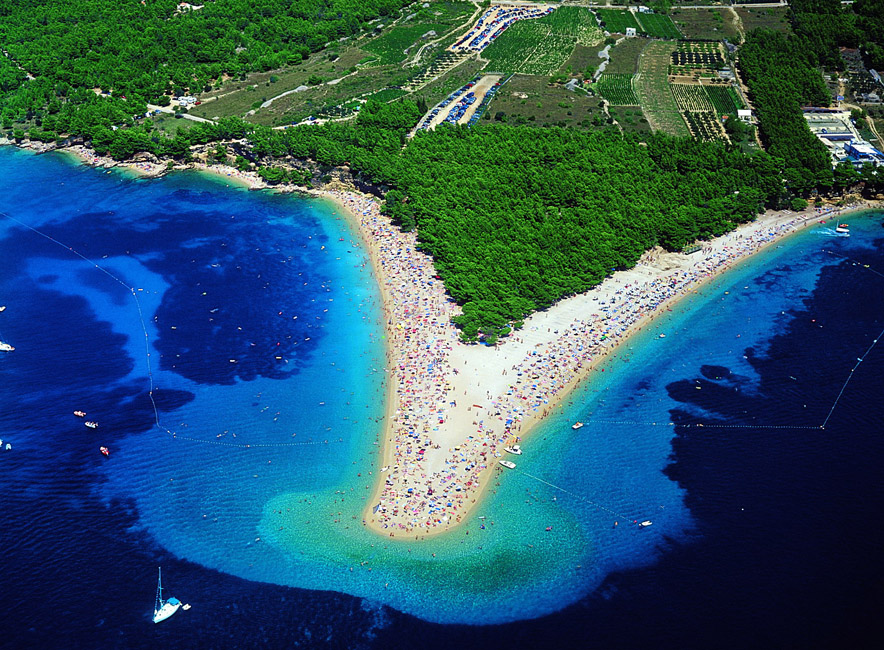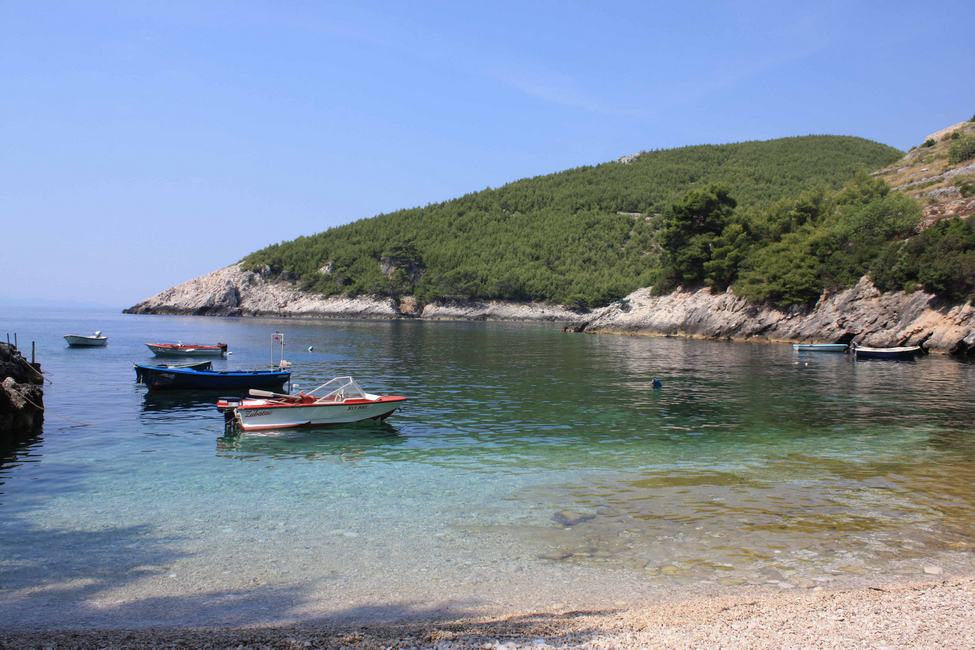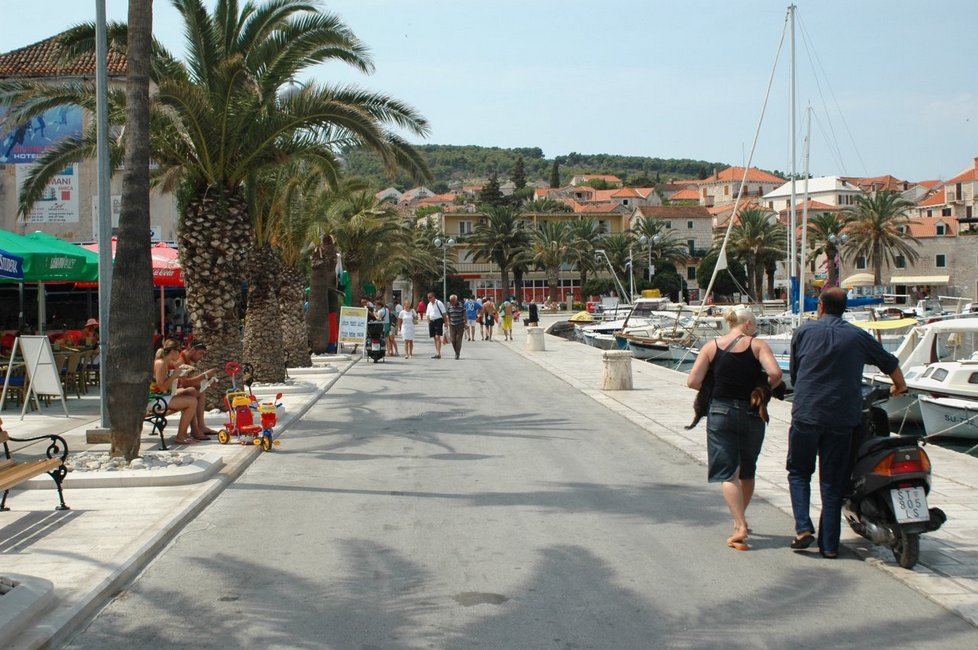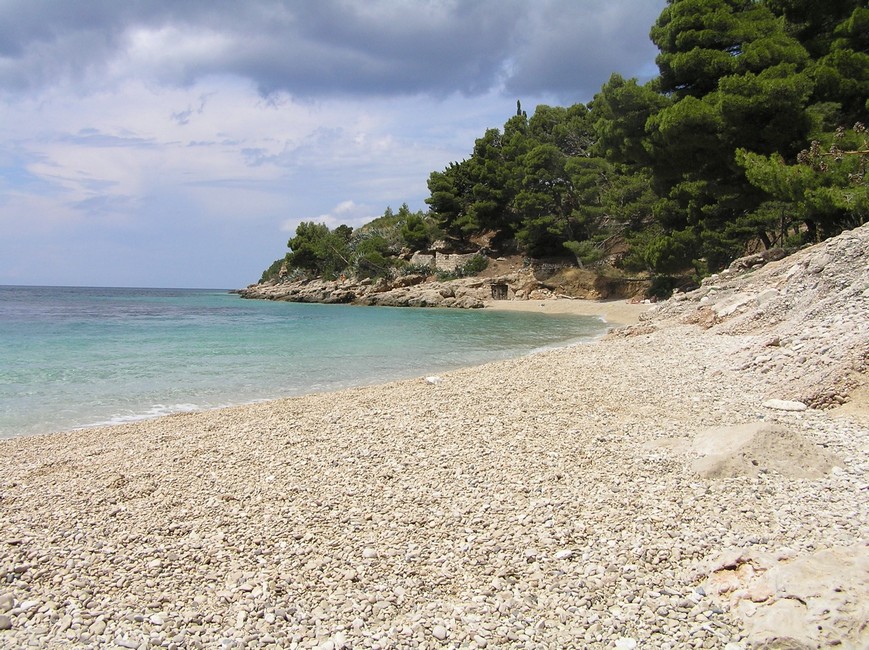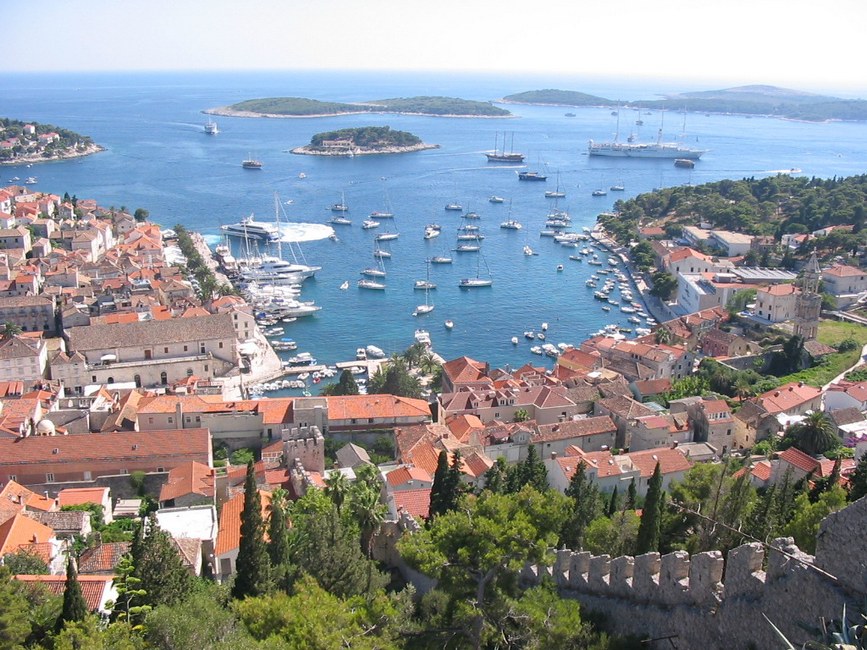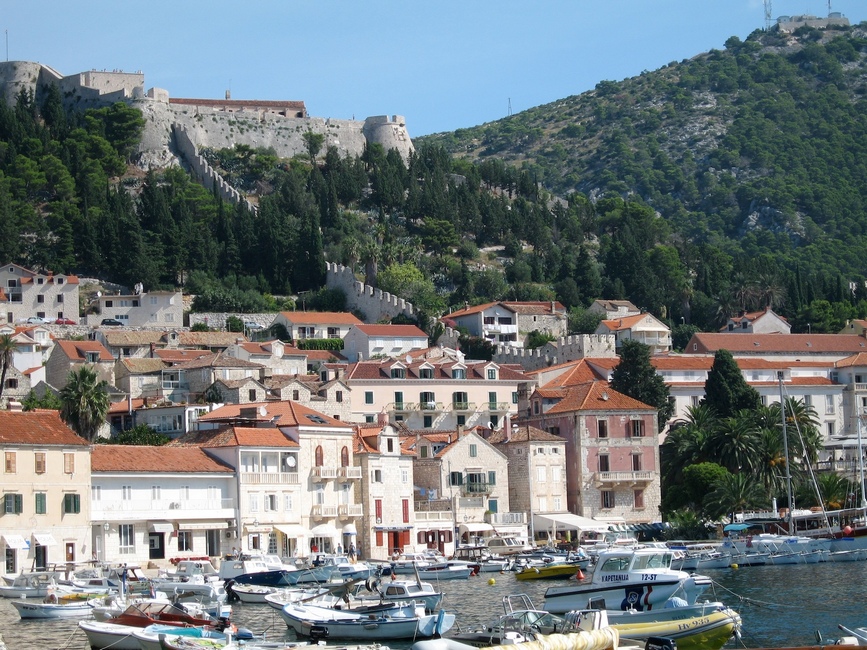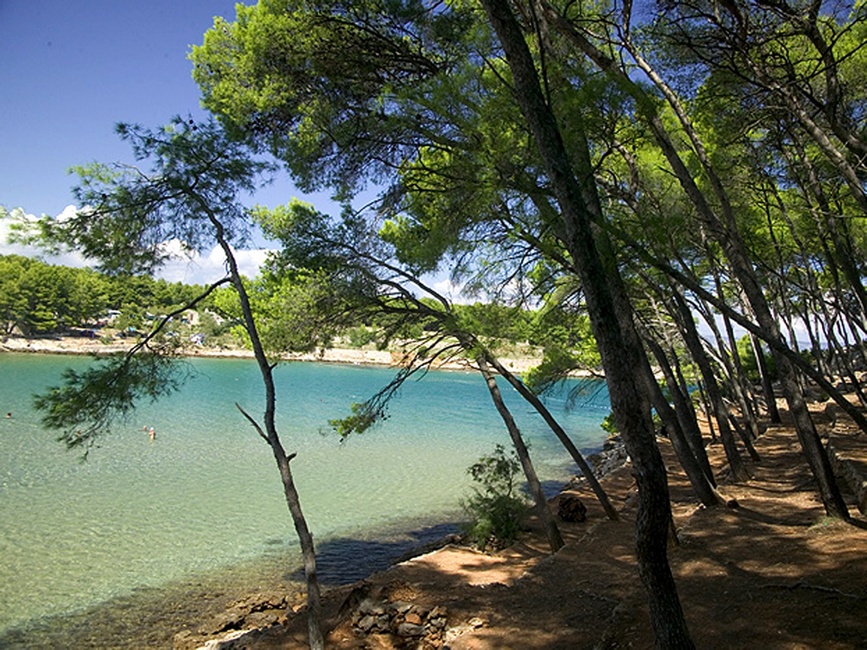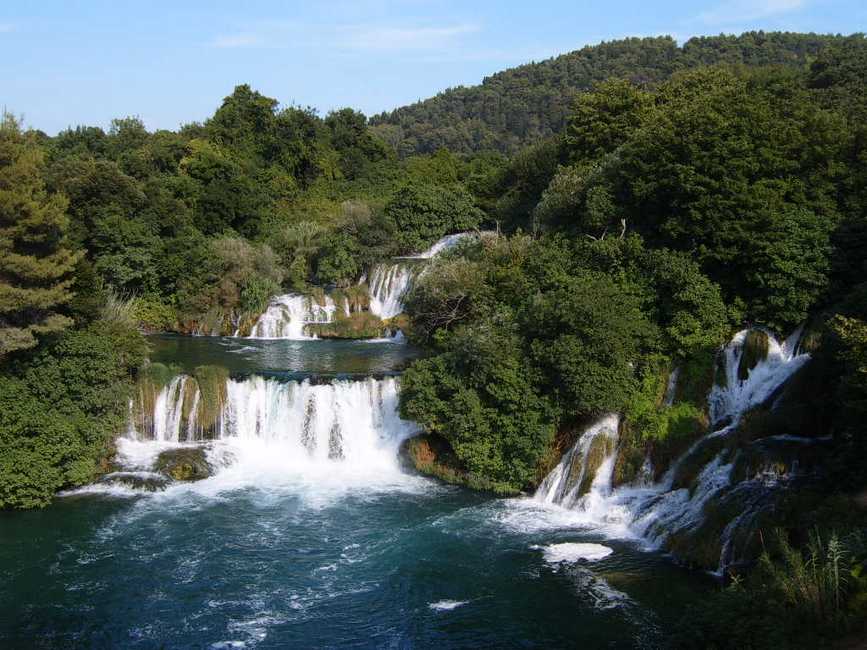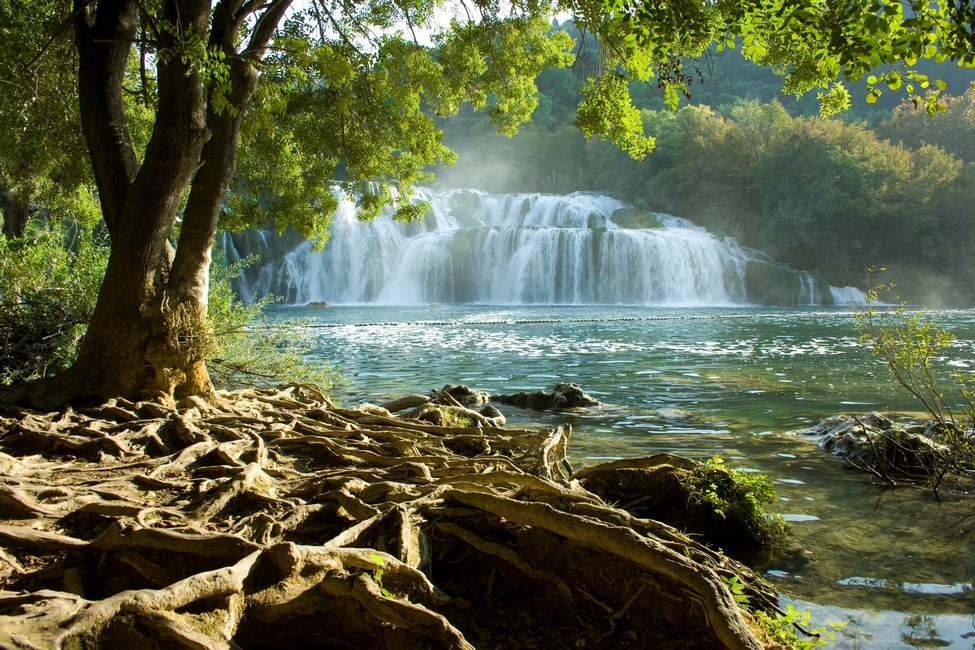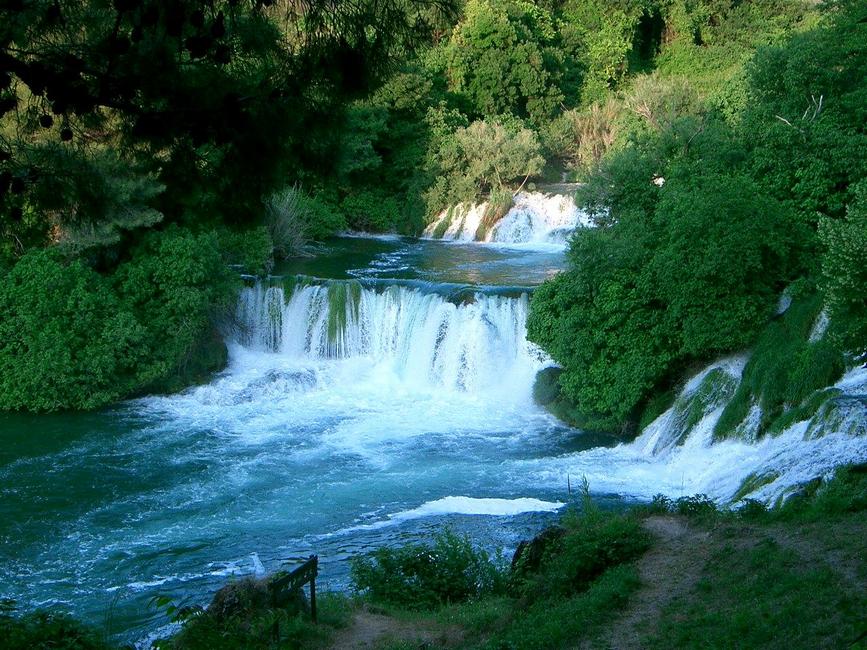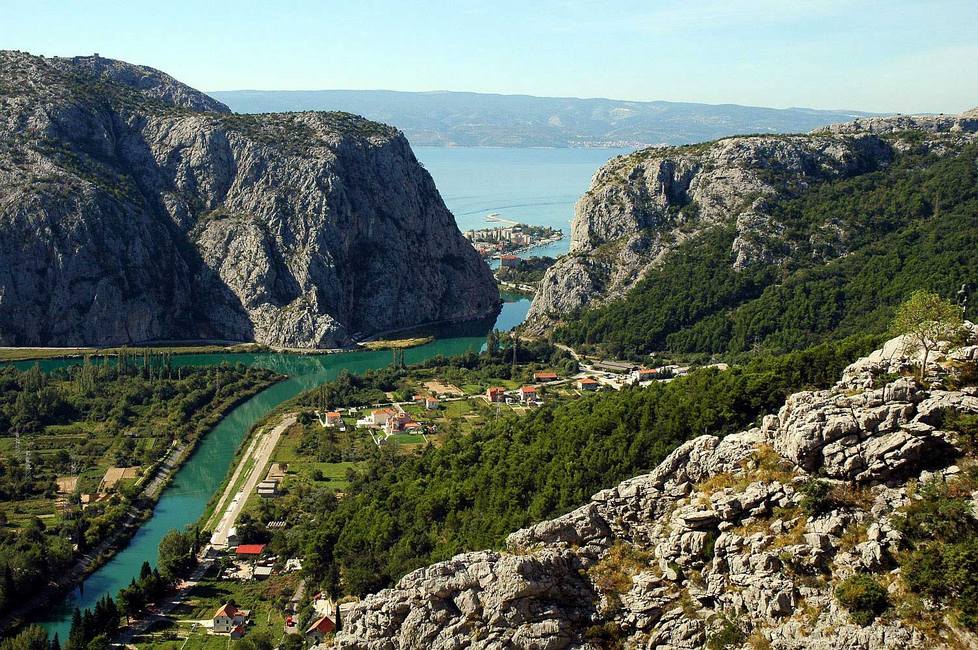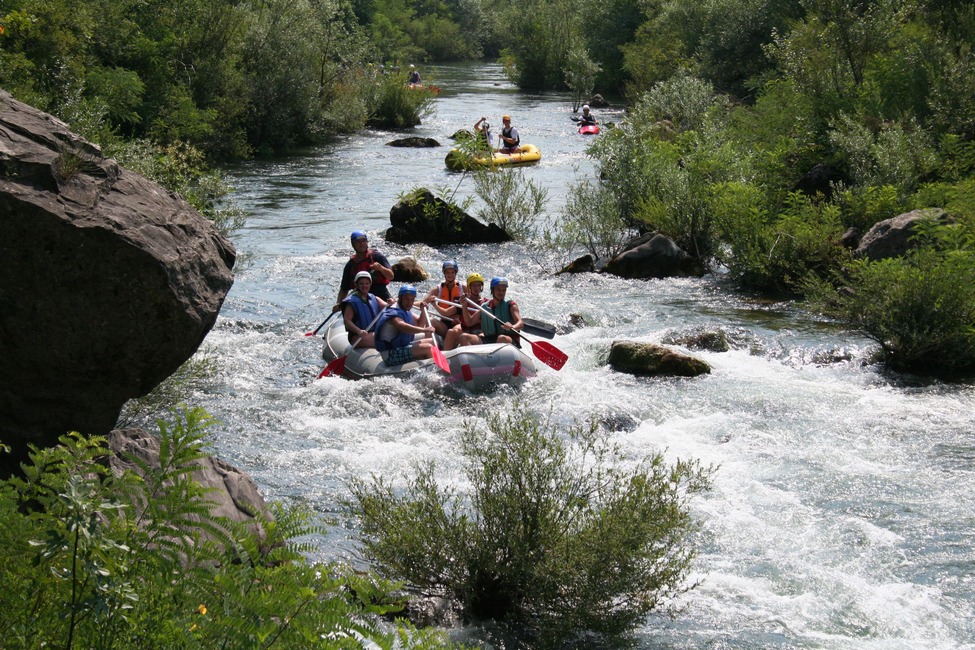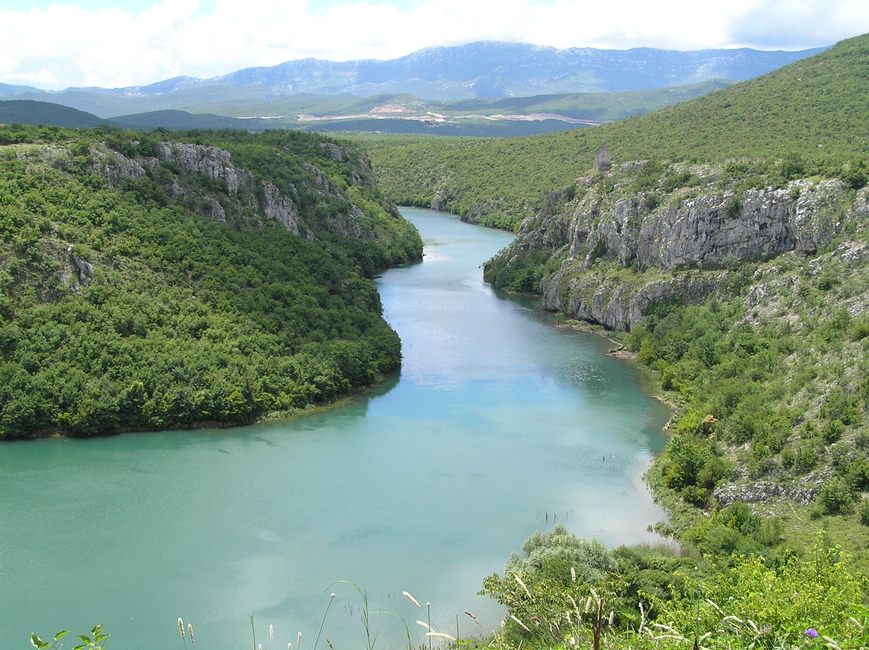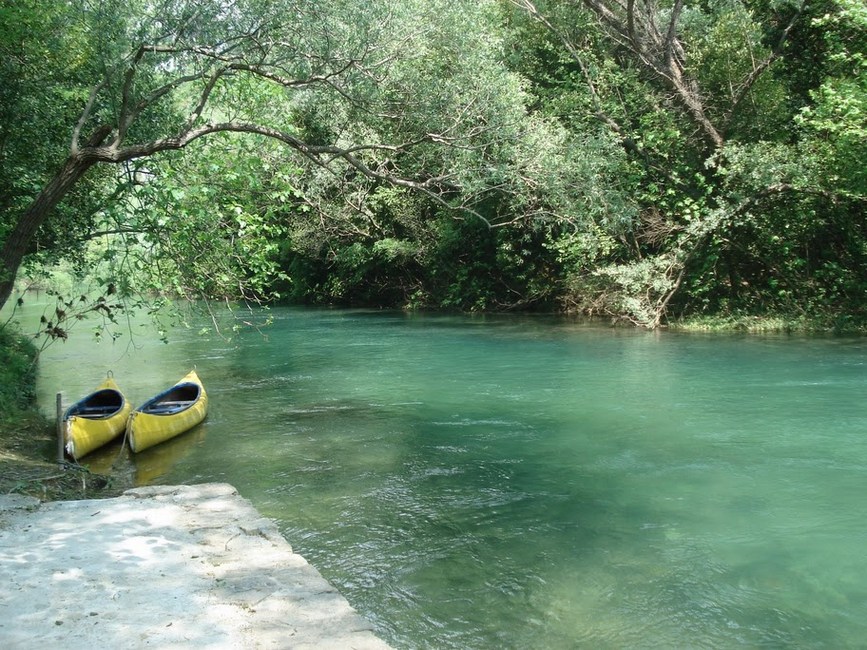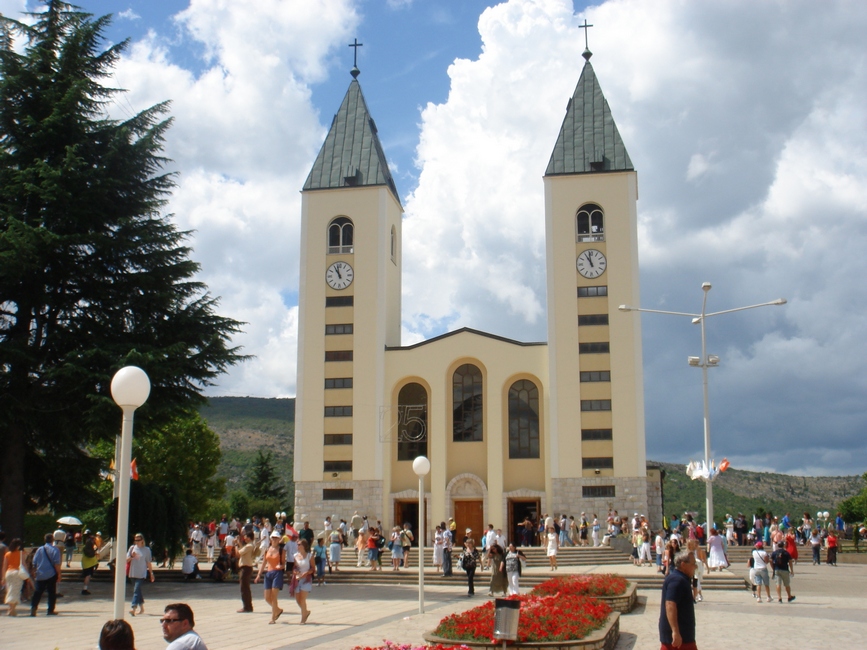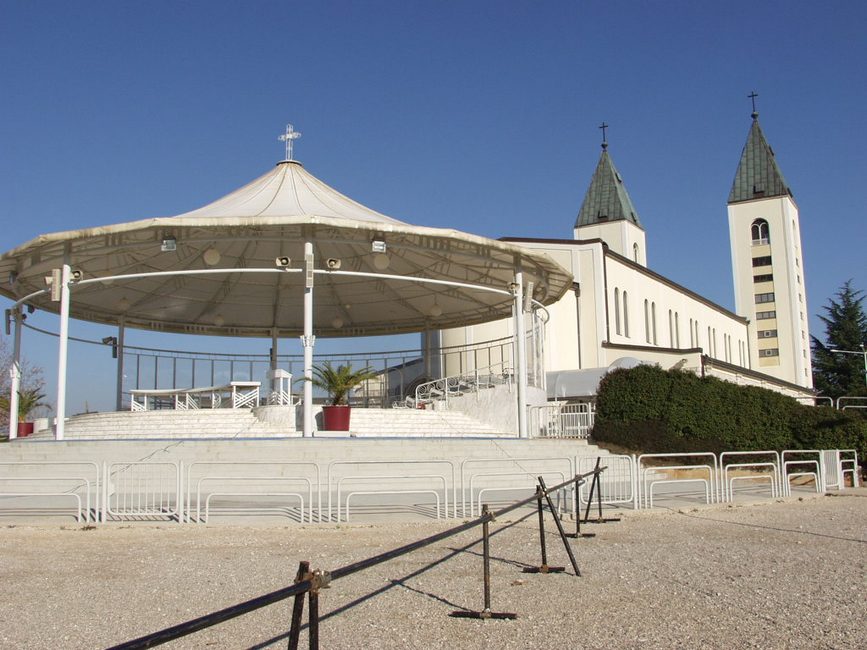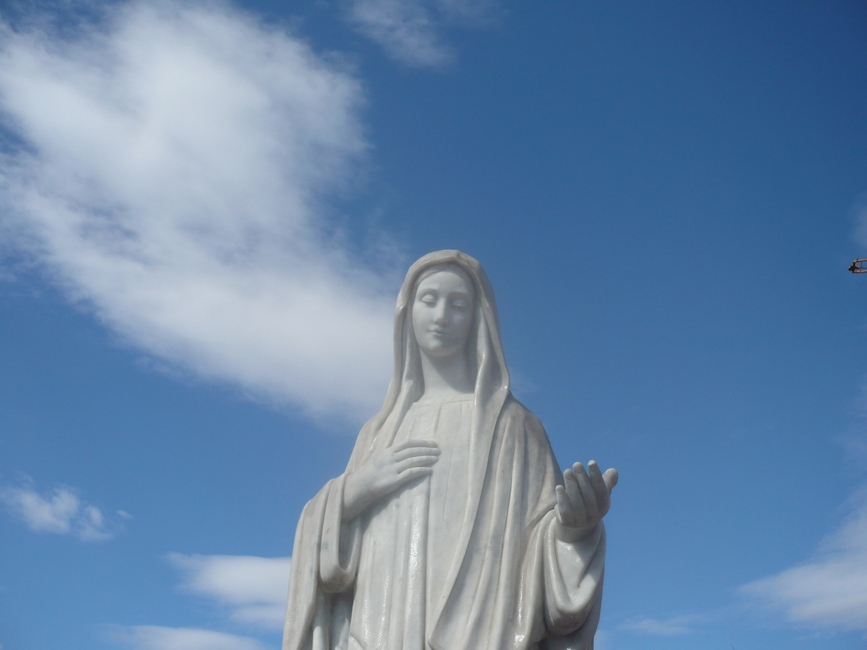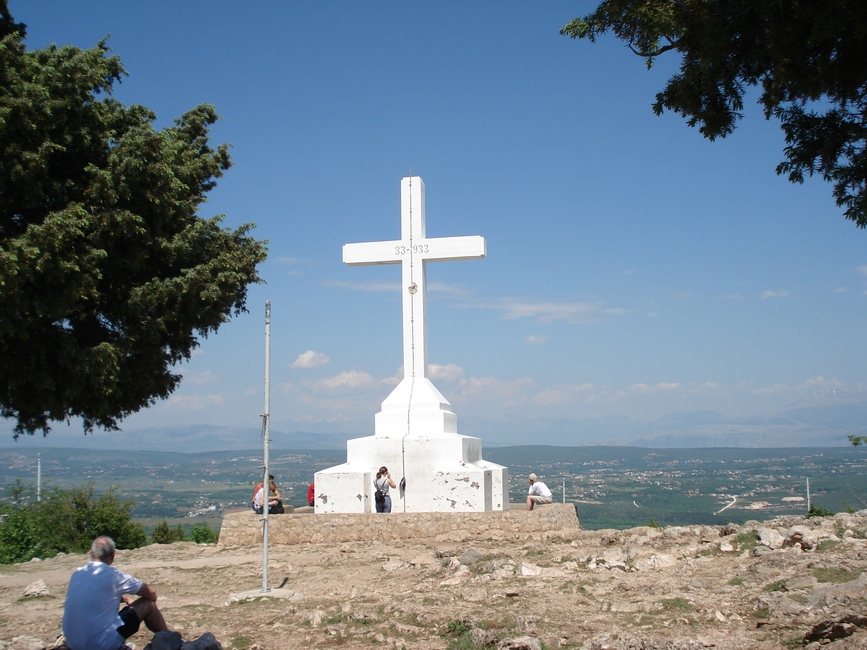The geographical location of Trogir and island Ciovo offers many opportunities for daily trips and excursions.
SPLIT:
is the second largest city in Croatia. It is the largest and most important city of southern Croatia and is therefore popularly known as the capital of Dalmatia. The center of Split Diocletian's Palace in 1979, together with the UNESCO World Heritage Site. In the old town is the Cathedral of Sveti Duje (holy Duje). It was used in earlier times as a mausoleum of the Emperor Diocletian. From their tower, you can enjoy a good view over the city. The podrumi translated (the "basement") are a part of very high speed network under the Diocletian's Palace. The daylight is gained back on the Peristyle, an impressive colonnaded. The old town center is located at the eastern end of the Marjan peninsula. In addition, Split is a major transportation hub. Its port is the most central Dalmatian islands (Brac, Hvar, Solta, but also further out of Lastovo and Vis) is the only constant connection. From the port of Split numerous daily ferries to nearby islands. In addition, regular ferries to Dubrovnik, Rijeka, Pescara and Ancona.)
Directly at the sea port along the bay at the old town is the Riva, a promenade, which is probably the most famous landmark of the city.
DUBROVNIK:
The city is located in the south of Croatia on the Adriatic Sea and is due to their cultural significance and the centuries of special political position often referred to as the "Pearl of the Adriatic" and "Croatian Athens". In 1979, the entire Old Town was included in the UNESCO World Heritage List. The city of Dubrovnik was one of the centers in the history of the development of the Croatian language and literature. Many famous Croatian poets, artists, scholars, mathematicians and physicists are from this city. Dubrovnik can now be referred to as a cultural center of Croatia. Dubrovnik is one of the most beautiful cities in the whole Mediterranean area and therefore a center of tourism. The city is fast becoming an international meeting place of international jet set and High Society. The city walls of Dubrovnik are 1940 meters long and up to six meters wide, and (for a fee) completely walkable.
Also found in July and August since 1950, the annual summer festival of Dubrovnik (Dubrovačke ljetne igre) rather than many events in the Performing Arts.)
Dubrovnik has an international airport. The expansion of the A1 motorway to Dubrovnik is the earliest in 2010. So far, Dubrovnik can be reached only through the Croatian National Highway D8 (Adriatic Highway). From the west of Dubrovnik situated Franjo Tudjman Bridge over the Bay of Rijeka Dubrovacka to establish, as ring-road on the slopes above Dubrovnik and is along two lines connected to the city.
BRAC:
is 396 km ², the third largest and with the Vidova Gora (also Mount Sveti Vid) and its 778 m the island with the highest elevation in the Adriatic.
It is one of Croatia and is located off the coast of Dalmatia, near the port city of Split. Capital with over 3,000 inhabitants Supetar. This place approximately every hour during the summer (less frequently in winter months) to the ferry, the need for the crossing from the mainland about an hour. Another ferry is Sumartin that connects the island with Makarska. Bol is considered the tourist center of Brač. In the immediate vicinity of the place is the Golden Horn, supposedly the most beautiful beach in Croatia. With its secluded location on the southern coast of Brac, Bol is the oldest town on the island, but also one of the best known seaside resorts of the Adriatic. Apart from cultural monuments, the magnificent natural landscape is worth a visit. Both east and west of Bol are numerous shores, beautiful beaches. The most famous beach, Zlatni rat is, according to many at the same time the most beautiful on the Adriatic. This cape with a beach is a unique natural phenomenon: it resembles a tongue that protrudes deep into the sea and, depending on wind and tides changed its form, turns right again and seem sometimes to the left.
HVAR:
Hvar is a Croatian island in the Adriatic Sea off the Croatian coast. The elongated island is the fourth largest in the Adriatic islands. The entire island is for tourists, especially during the summer months, very popular. Tourism plays a crucial role.
In addition to tourism in subsistence agriculture are the cultivation of lavender and manufacturing of products derived from it (for example, lavender oil and lavender pillows) and the pressing of some outstanding wines, the livelihood of the population. The most famous wines of the island are excellent Zlatan Plavac and the nearly black Faros derived from grapes of the Plavac Mali, are the best locations in very steep vineyards on the south side of the island. Even the Dolac Ivan, also a very dark red wine from the grape and the Mali Plavac Bogdanuša who can remember a very dry sherry, deserve attention. Hvar is connected with the Croatian mainland by ferry-from Stari Grad to Split and from Sućuraj after Drvenik and on the coastal line Rijeka - Dubrovnik. The town of Jelsa is situated on the north side of the Dalmatian island of Hvar. It is enclosed by the two largest peaks of the island, Nikola and Hum. Depending on the weather you can see the neighboring island of Brac and the mainland. A catamaran Jadrolinija commutes daily between Jelsa and the port city of Split. The neighboring islands can easily rent one of the many boats. Furthermore, there is a bus service to neighboring towns.
The town of Jelsa has some attractions that are worth looking at themselves. There are, for example, the Perivoj (pleasure garden) from the period around 1870. Since Jelsa Croatia as a whole is characterized Catholic, there are a large number of chapels and churches, especially the castle church to St. Mary. As the most beautiful place Jelsa is the place of St. John and the accompanying chapel. It is located in the old town of Jelsa.
Krka National Park:
He was declared a national park in 1985 and is the seventh national park in Croatia. The National Park is located some 17 km from Sibenik and encompasses an area of 109 square kilometers. The National Park consists of numerous lakes, waterfalls and Kaskarden. The flora and fauna is unique. The Skradinski Buk is the most famous waterfall. Around the falls, there are numerous hiking trails. Small exhibitions and stalls in which figs, blackberries and other delicacies are sold and small souvenir shops offer a pleasant extra attraction. The monastery Visovac is a Franciscan monastery that is located on an island in the lake and is visited in the Visovacbootour. The convent once served as protection against the Turkish conquerors. To date, the treasures of the library are obtained.
RIVER CETINA:
The Cetina river, which flows for nearly a hundred miles into the Adriatic Sea, has formed over the centuries, impressive canyons with high cliffs and waterfalls Kaskarden. The crystal clear waters ideal for swimming. The river Cetina is one of the most beautiful places in Croatia, where one can enjoy the magic of rafting. Located in a flowing pitoresque Lanschaft the Dalmatian Zagora, the river still by numerous canyons, places and erhebenenden over the river hills. The area around the river Cetina has a great historical and archaeological importance.
Medjugorje:
Medjugorje is a village in Bosnia-Herzegovina. Medjugorje is located in the town mostly populated by Croats in Citluk part of Herzegovina. The story of Medjugorje is the majority of Catholics very well known. Six young people have played in 1981 in the mountains between the villages of Medjugorje and Bijakovici when their Saint Virgin appeared and spoke to them. When their children told their parents, they believed not them. But the symptoms did not stop the Heillige Virgin appeared again and again until the skeptics have lost all possibility of criticism. It is estimated that visited from then until now 15 millions people this little place.

